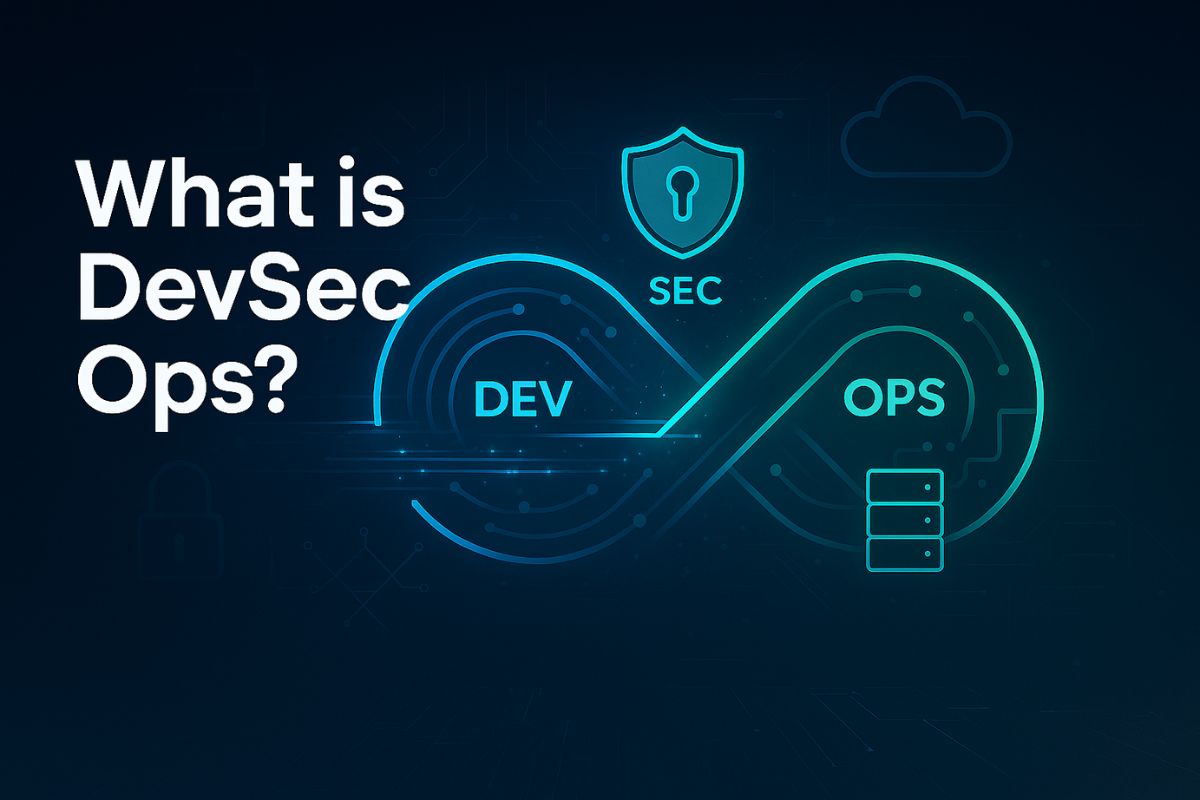DevSecOps integrates security into every stage of the DevOps lifecycle—from development to deployment. This guide explains what DevSecOps is, its benefits, workflow, best practices, tools, and how organizations in India and globally are using it to build secure, high-performing applications at scale.
Fast-paced software development world, speed often comes at the cost of security. But what if you didn’t have to choose between the two?
That’s where DevSecOps comes in—a practice that integrates security into every stage of the DevOps lifecycle. Instead of treating security as a final step, DevSecOps shifts it left into the planning, coding, and testing phases, creating a culture of shared responsibility between development, operations, and security teams.
Let’s dive into what DevSecOps is, how it works, its benefits, tools, and best practices that help organizations build secure, scalable, and reliable software.
1. What Is DevSecOps?
A. DevSecOps Meaning
DevSecOps stands for Development, Security, and Operations. It’s a cultural and technical approach to software development that integrates security practices throughout the DevOps pipeline—from code to production.
Traditionally, security was a separate phase handled after development. With DevSecOps, security becomes an integral part of continuous integration and continuous delivery (CI/CD), ensuring that code is secure from the beginning.
“DevSecOps = DevOps + Security from the start”
B. DevSecOps Workflow
DevSecOps builds security into each phase of the Software Development Life Cycle (SDLC):
| SDLC Stage | DevSecOps Action |
|---|---|
| Plan | Define security policies and compliance rules |
| Develop | Use secure coding practices, code reviews |
| Build | Integrate security checks (SAST, code scanning) |
| Test | Run automated security tests (DAST, dependency scans) |
| Release | Verify configurations and compliance |
| Deploy | Use Infrastructure as Code (IaC) with policy checks |
| Operate & Monitor | Continuous threat detection, incident response |
2. Benefits of DevSecOps
A. Why DevSecOps Matters
Organizations adopting DevSecOps report faster releases, fewer vulnerabilities, and better team collaboration. Key benefits include:
- Early Risk Detection: Catch security flaws during development
- Faster Time-to-Market: Security testing is automated and integrated
- Reduced Costs: Fixing bugs early is cheaper than in production
- Improved Compliance: Helps with audits and regulatory requirements (e.g., GDPR, HIPAA)
- Cultural Shift: Encourages shared responsibility across teams
- Scalability: Security practices scale with the product lifecycle
According to a Gartner report, by 2026, 70% of enterprises will integrate security into the DevOps pipeline through DevSecOps practices.
3. DevSecOps Tools
Here are some popular DevSecOps tools categorized by their function:
| Stage | Tools |
|---|---|
| Static Code Analysis (SAST) | SonarQube, Fortify, Checkmarx |
| Dynamic Analysis (DAST) | OWASP ZAP, Burp Suite |
| Dependency Scanning | Snyk, WhiteSource, Dependabot |
| CI/CD Security Integration | Jenkins, GitHub Actions, GitLab |
| Infrastructure as Code (IaC) | Terraform with Sentinel, Pulumi |
| Container Security | Aqua Security, Prisma Cloud, Sysdig |
| Monitoring & Logging | Splunk, ELK Stack, Datadog |
Tools must be chosen based on development stack, compliance needs, and scalability.
4. Best Practices for Secure DevOps
To successfully implement DevSecOps, consider these best practices:
A. Shift Security Left
Start integrating security from the earliest stages—during planning and design. This reduces rework and ensures secure architecture.
B. Automate Security Testing
Automate static code analysis, vulnerability scans, and policy checks in the CI/CD pipeline to ensure speed without sacrificing security.
C. Secure Dependencies
Use tools like Snyk or Dependabot to scan third-party libraries for known vulnerabilities.
D. Apply Least Privilege
Ensure that all systems, services, and users follow the least privilege principle—access only what they need.
E. Use Infrastructure as Code (IaC)
Tools like Terraform, Ansible, and Pulumi allow for version-controlled and secure infrastructure deployments.
F. Continuous Monitoring & Incident Response
Log all activity and monitor in real-time using SIEM tools to detect anomalies, threats, or breaches.
G. Encourage Security Culture
Train developers on secure coding, hold security reviews, and create feedback loops between development and security teams.
5. DevSecOps in the Indian Context
A. Enterprise Adoption
Large Indian IT firms like Infosys, TCS, and Wipro are actively integrating DevSecOps into cloud-native projects, especially for BFSI and healthcare clients.
B. Startups & MSMEs
Indian startups in fintech, healthtech, and SaaS are adopting DevSecOps early to meet global compliance standards and reduce breach risks.
C. Government & Compliance
As India enforces stricter cybersecurity rules (e.g., CERT-IN, Data Protection Bill), DevSecOps will be critical for organizations dealing with sensitive user data.
6. Challenges & How to Overcome Them
| Challenge | Solution |
|---|---|
| Tool Overload | Choose tools that integrate well and align with your stack |
| Lack of Security Skills | Upskill Dev teams with basic security training |
| Cultural Resistance | Promote collaboration, involve stakeholders early |
| Compliance Complexity | Automate compliance checks and use audit trails |
Conclusion
DevSecOps isn’t just a buzzword—it’s a vital approach to building secure, agile, and scalable software systems. By embedding security into every step of the SDLC, organizations can stay ahead of threats without slowing down delivery.
As India moves toward deeper digital transformation, DevSecOps will be at the core of secure innovation. Whether you’re a startup or a large enterprise, now is the time to build security into your development culture.
👉 Want to learn more? Explore our blogs on DevOps, cybersecurity, and AI-powered tools.
FAQ
1. What is DevSecOps in simple terms?
DevSecOps is a method that integrates security into every phase of software development and operations—making security everyone’s responsibility.
2. How is DevSecOps different from DevOps?
DevOps focuses on speed and collaboration between dev and ops teams. DevSecOps adds security into that mix—without delaying delivery.
3. What are the main DevSecOps tools?
Popular tools include SonarQube, OWASP ZAP, Snyk, Jenkins, GitLab CI, Terraform, and Aqua Security.
4. Is DevSecOps a career path?
Yes. Roles like DevSecOps Engineer, Security Automation Specialist, and Cloud Security Architect are in high demand in India and globally.
5. How can a company start with DevSecOps?
Start small—automate security tests in CI/CD, train developers, and gradually shift security left in the development process.
6. What industries use DevSecOps the most?
BFSI, healthcare, e-commerce, telecom, and government sectors are among the top adopters due to strict compliance needs.
7. Why is DevSecOps important in cloud environments?
Cloud deployments are dynamic. DevSecOps ensures that security policies are embedded into infrastructure as code and monitored continuously.


